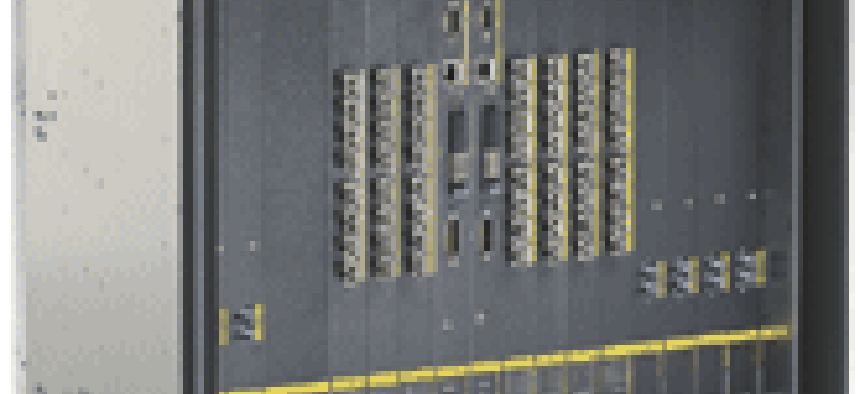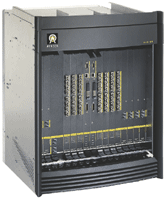Network switches built for speed

If there's one thing network administrators can all agree on, it's that you can never have too much bandwidth.
If there's one thing network administrators can all agree on, it's that you can never have too much bandwidth. On that principle, vendors are racing to produce 10-Gigabit Ethernet products to meet the growing demands of enterprises and large networks.Despite a slow start, the 10-Gigabit Ethernet market is expanding as new products, lower prices and user demands for more network bandwidth push it to the forefront.In 2001 and 2002, switch and router vendors shipped only about $42 million worth of 10-Gbps ports. This figure is expected to quadruple to more than $120 million by the end of this year, and by next year will exceed $300 million. The market for 10-Gbps products will approach or exceed $1 billion in 2005, according to the Yankee Group, a communications and networking research and consulting company in Boston.High-density, high-speed networks are increasingly made up of 10/100-Mbps Fast Ethernet and 1-Gbps Gigabit Ethernet segments.10-Gigabit Ethernet not only supports all the services provided by installed Ethernet, Fast Ethernet and Gigabit Ethernet segments, it also readily supports more advanced services, such as packetized voice, video and data, and layer 3 through layer 7 intelligence.It uses the same IEEE 802.3 Ethernet media access control, or MAC protocol, frame format and size used by Ethernet, Fast Ethernet and Gigabit Ethernet. It is full duplex, so your legacy Ethernet network gear won't be wasted; pop in a 10-Gigabit Ethernet network interface card, and you're off and running.The 10-Gigabit technology easily scales to cover enterprise and service provider networks. It supports LANs, MANs and WANs, and matches the network backbone speed of Synchronous Optical Network OC-192, according to a white paper by Cisco Systems Inc.Because it requires no changes to the Ethernet MAC protocol, it supports all upper-layer services of the Open Systems Interconnection seven-layer model, such as high availability, quality of service, voice over IP, security and policy enforcement, server load balancing and Web caching.To date, the main markets for 10-Gbps services are data centers, research networks and MANs. The switches and routers are proving to be more cost-effective than Fibre Channel or Sonet systems for handling traffic from network servers loaded with Gigabit Ethernet NICs. Researchers using grid computing ? developing virtual computers made up of input from dozens or hundreds of servers using high-speed links ? were some of the earliest adopters of 10-Gbps Ethernet. Telecommunications carriers are having success using 10-Gbps Ethernet links to connect lower-speed transport between offices in metropolitan areas.Other potential trouble spots are the cable and wireless data transport industries. Cable operators are beginning to deliver more streaming video, and wireless operators are awaiting an explosion in business if they can deliver 10-Mbps and even 100-Mbps Ethernet services to mobile users. 10-Gbps Ethernet switches and routers will serve as the engines to manage this type of traffic.Savvy switch buyers will check out the entire range of a switch's features, including things such as port density, protocol handling, layer 2 and layer 3 features, security options, advanced management features, fault isolation, power management and more.In the minds of many buyers, however, the main measurements of a network switch's performance are its aggregate switching capacity and throughput per port. To get the aggregate switching capacity of a typical switch, just multiply the number of usable interface slots by the total throughput capacity of each line card. If a 10-Gigabit Ethernet switch comes with six interface slots and supports 40 Gbps on each line card, its aggregate switching capacity will be 240 Gbps.As a marketing ploy, some vendors count the full-duplex traffic moving in and out of the switch twice, and claim that the switch's capacity is twice what it really is. Don't fall for this trick.Also, check to see if the switch you are buying offers a full wire speed capacity of 10-Gbps. Some switches built on older technology offer throughput speeds of half that figure. Check to see if the switch you are buying offers full line-rate forwarding. If it doesn't, ask why.Other things to look for:MPLS. Another measurement of high-speed switch performance is ? or ought to be ? protocol support. Multiprotocol label switching is a fairly new protocol that makes IP traffic more predictable. Carriers especially are beginning to use MPLS to develop virtual private networks and improve network resiliency and recovery times, according to Light Reading, an online telecom research company, at .Virtually all products listed in the chart support some version of MPLS, and engineers are working on newer versions to support even better network resiliency.Support for other networking technologies. Many switches offer more than Ethernet protocol management. Extreme Networks Inc.'s BlackDiamond series can handle ATM modules, and Nortel Networks Ltd.'s Passport 8600 can handle both ATM and Sonet modules.IPv6. Internet Protocol Version 6 will eventually replace Version 4. IPv6 fixes a number of problems in IPv4, such as the limited number of available IP addresses, a situation that is worsening as millions of wireless users seek Internet access. It also adds improvements in areas such as routing and network autoconfiguration.Most of the vendors listed in this guide haven't yet built their switches to handle IPv6 protocols, but you can expect virtually all switches to include it when IPv6 takes hold.
 10-Gigabit Ethernet market set to explode
10-Gigabit Ethernet market set to explode
www.lightreading.com
J.B. Miles of Honolulu writes about communications and computers. E-mail him at jbmiles@starband.net

Atrica's A-8100 has 15 10-Gigabit Ethernet ports or up to 120 Gigabit Ethernet ports in a 17-slot chassis. It has an aggregate switching capacity of 150 Gbps.
www.lightreading.com
J.B. Miles of Honolulu writes about communications and computers. E-mail him at jbmiles@starband.net
NEXT STORY: Harris wins Navy satellite communications work